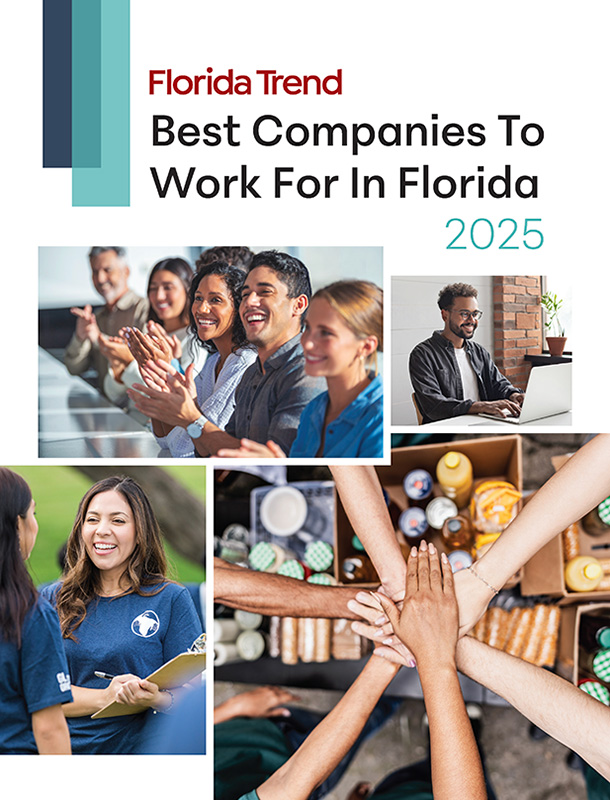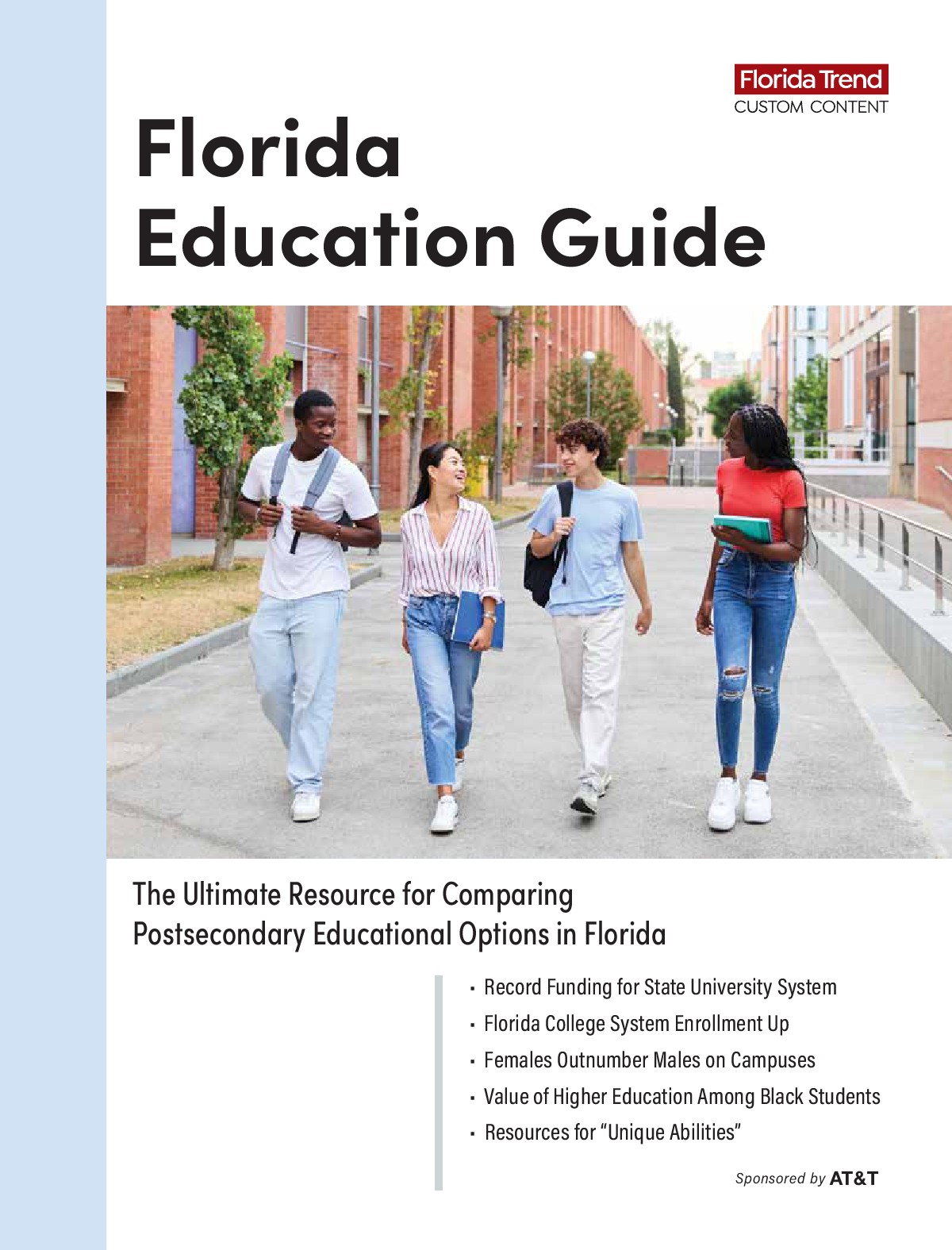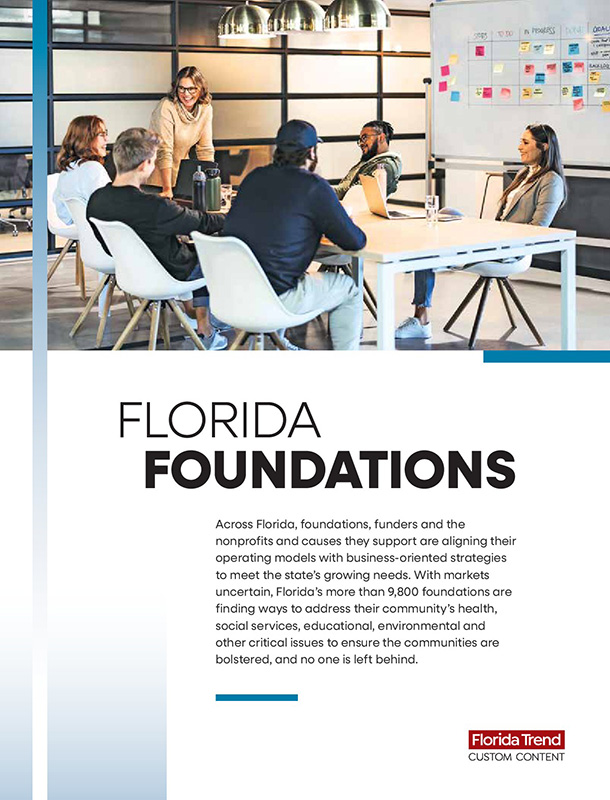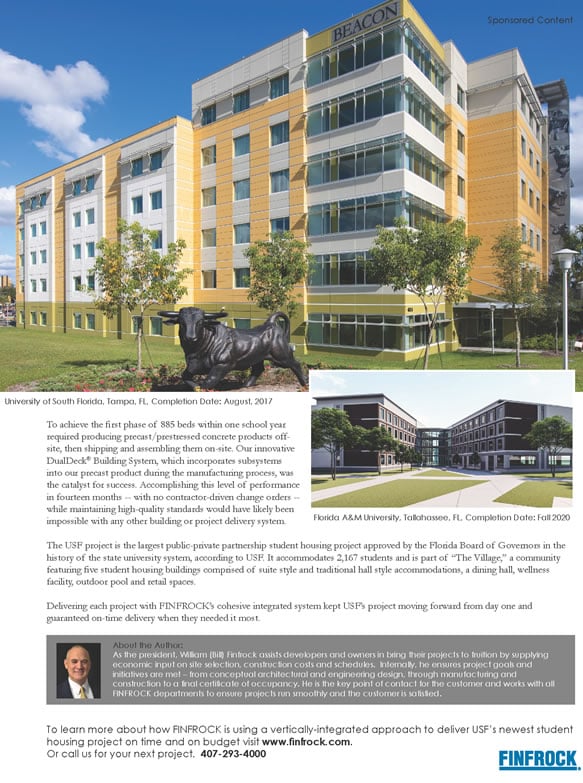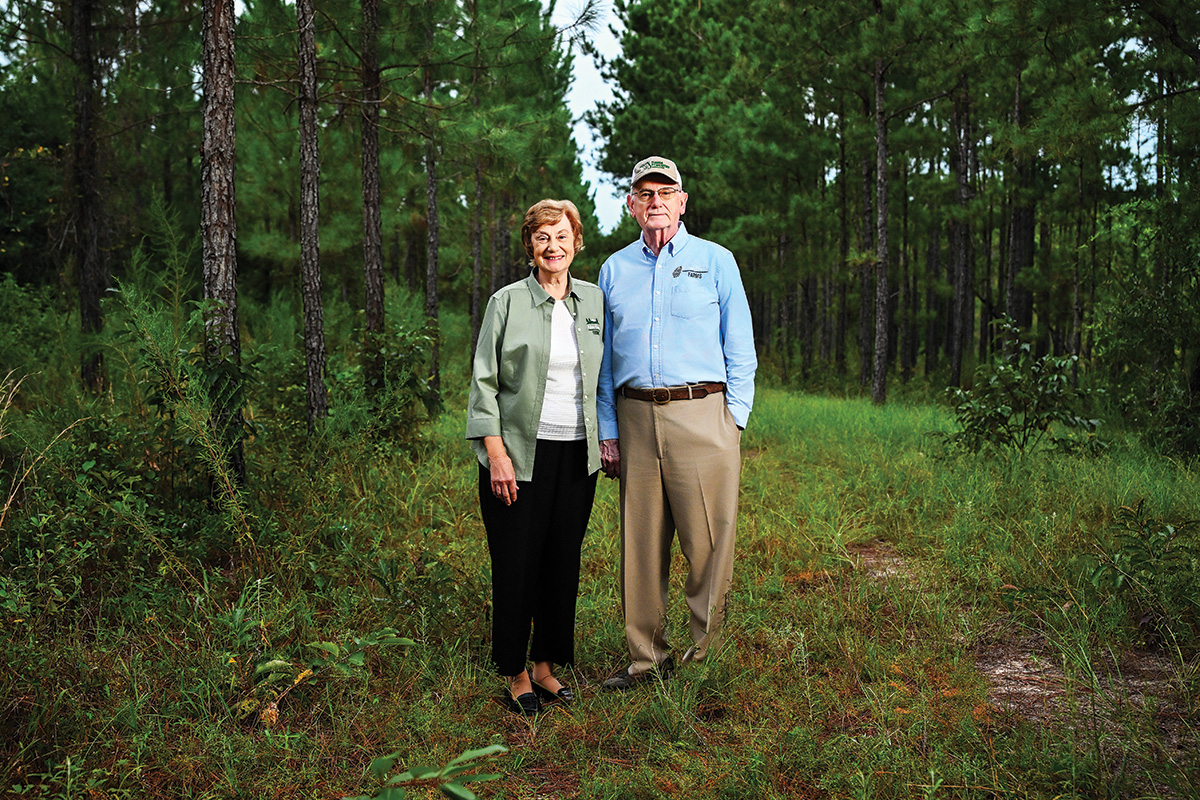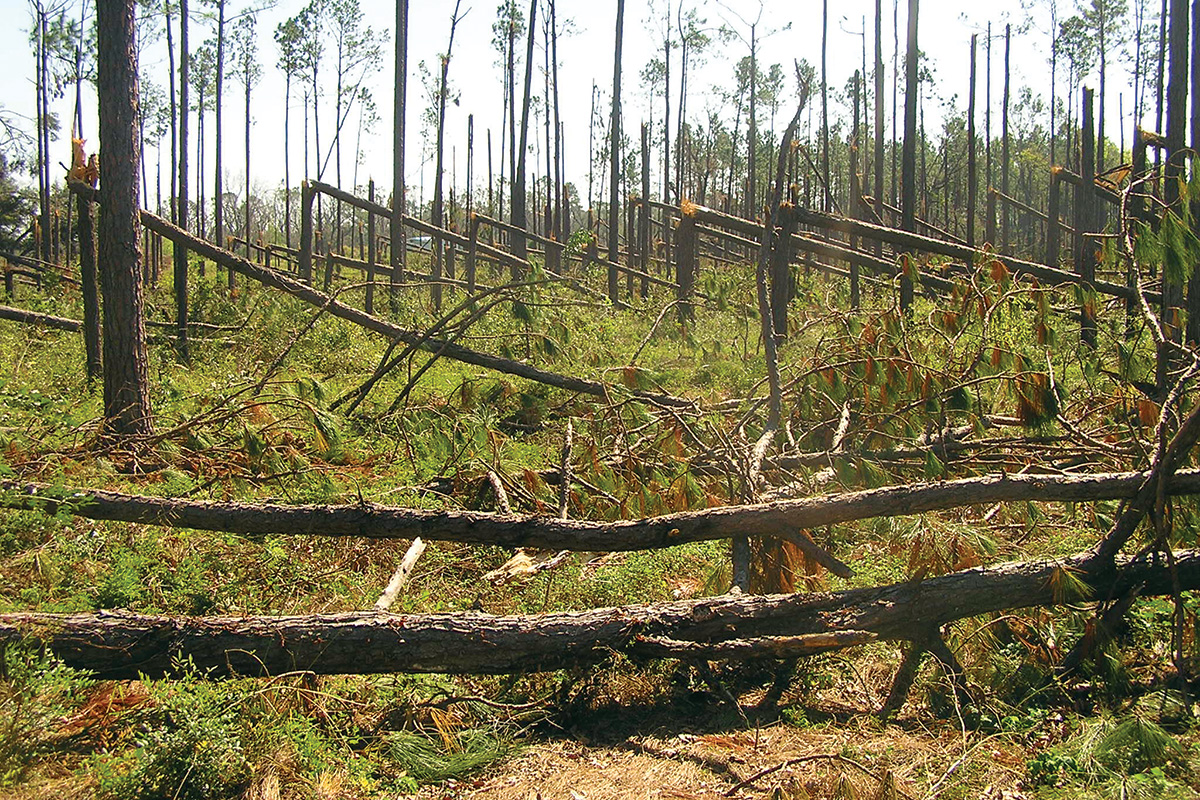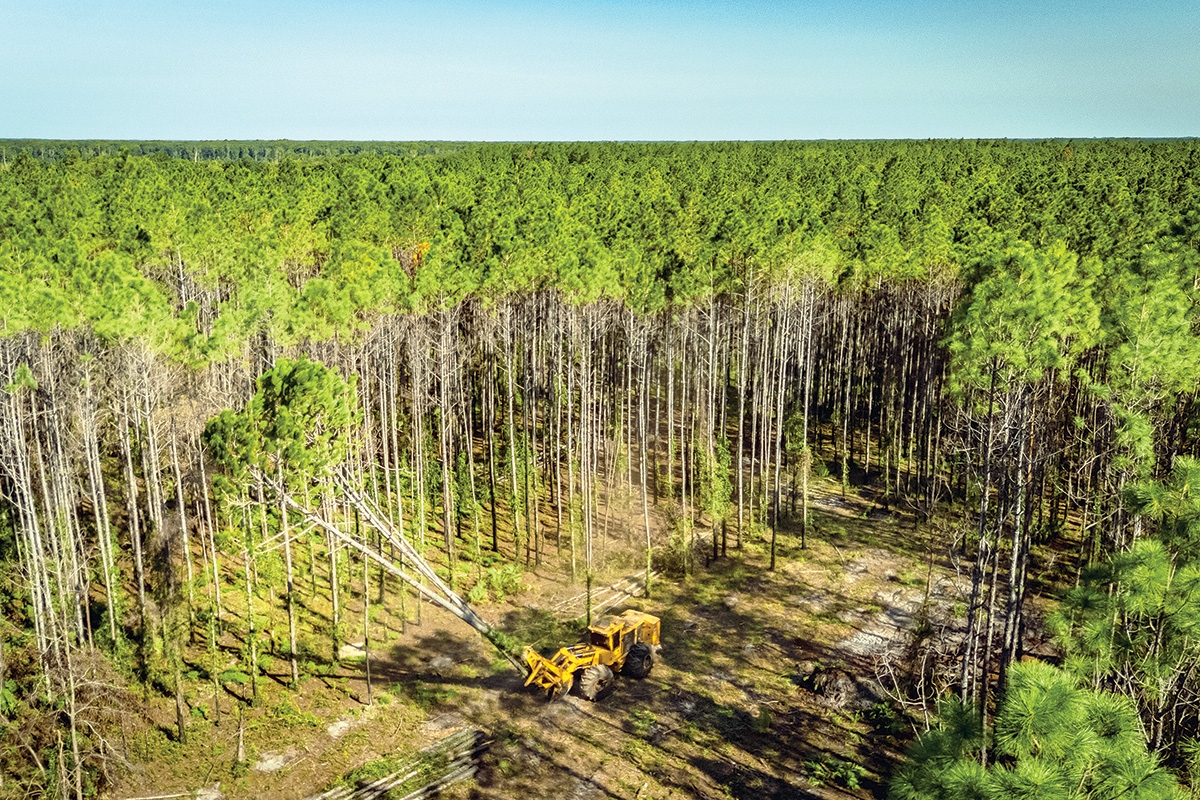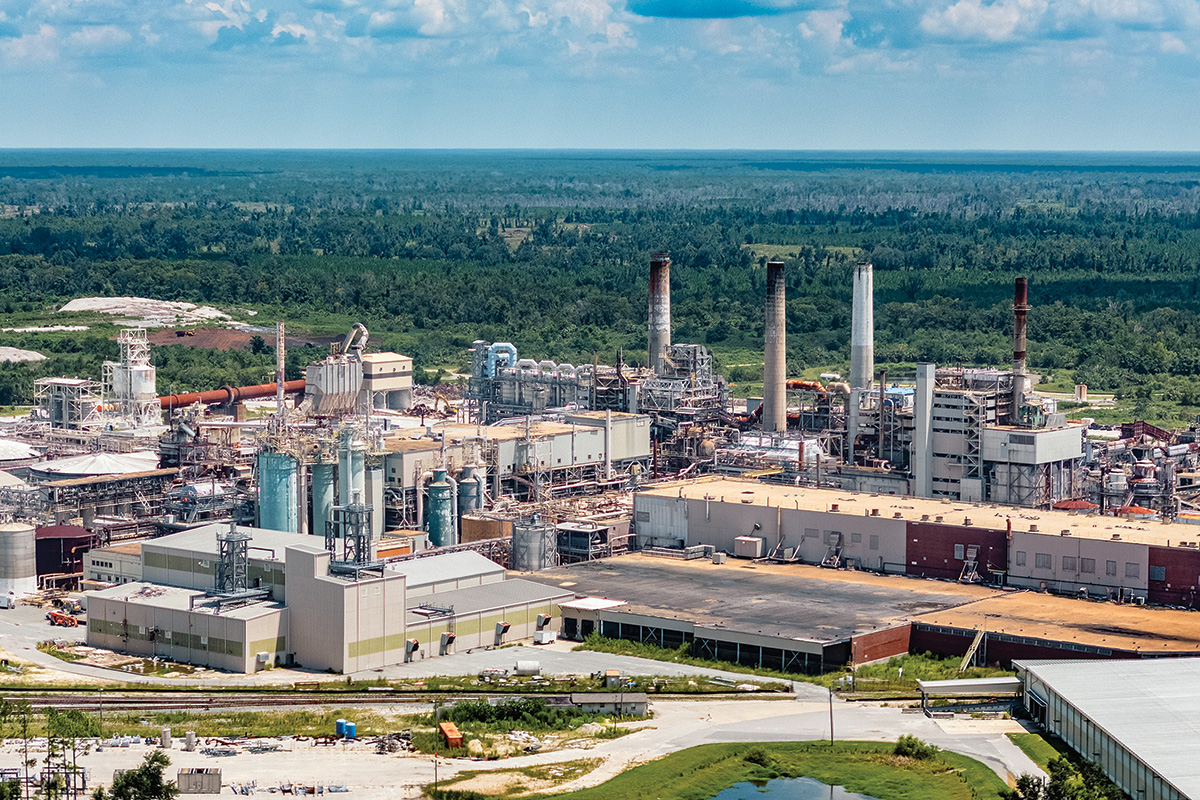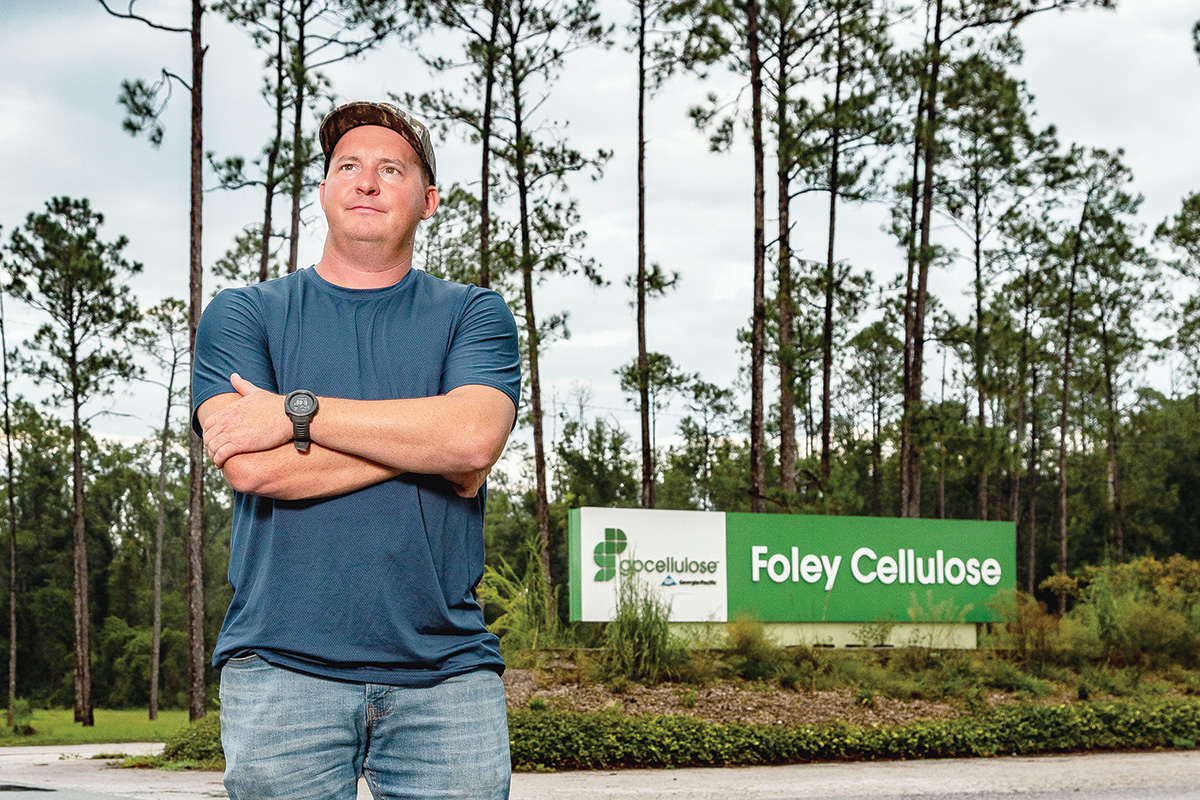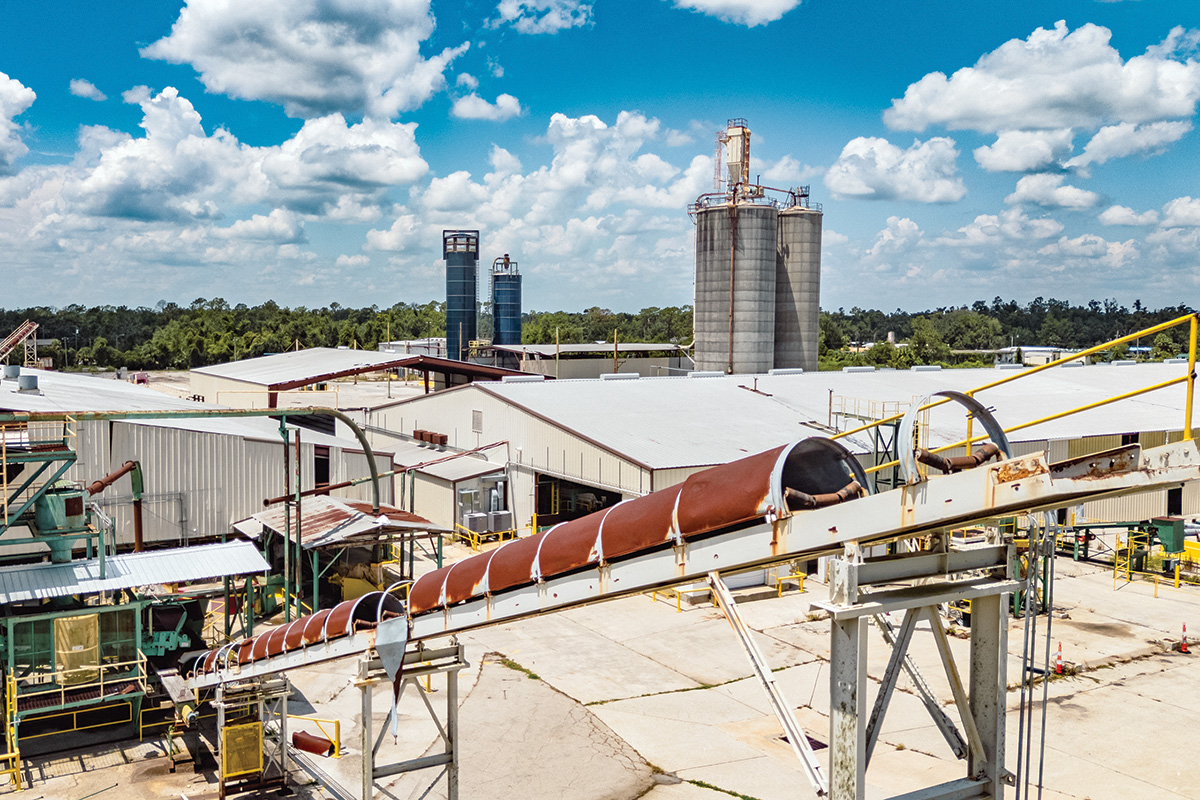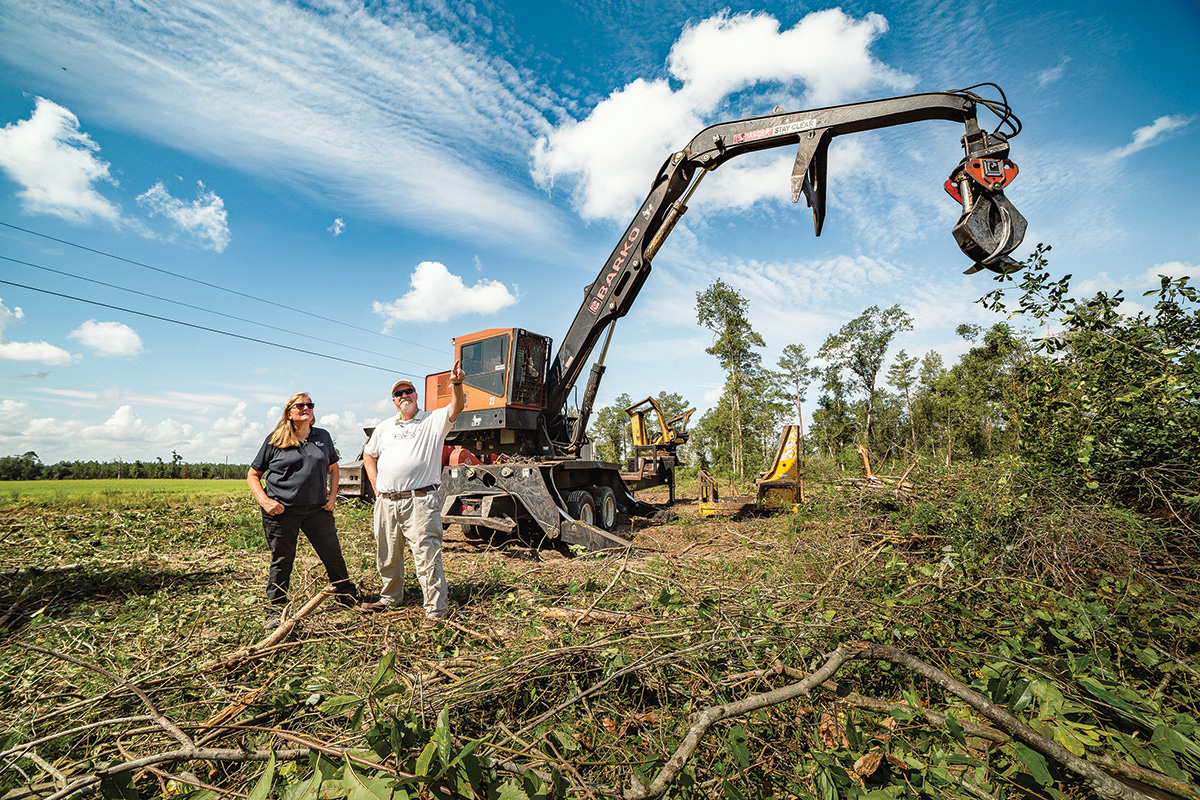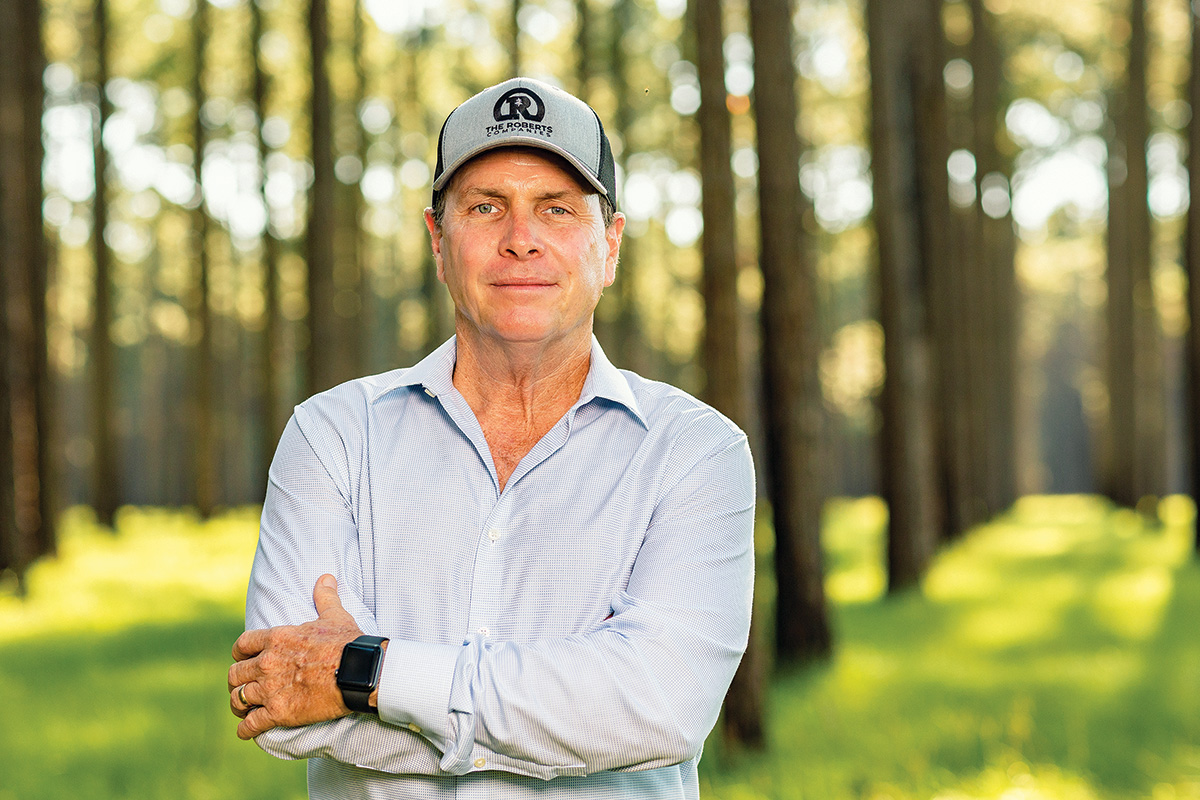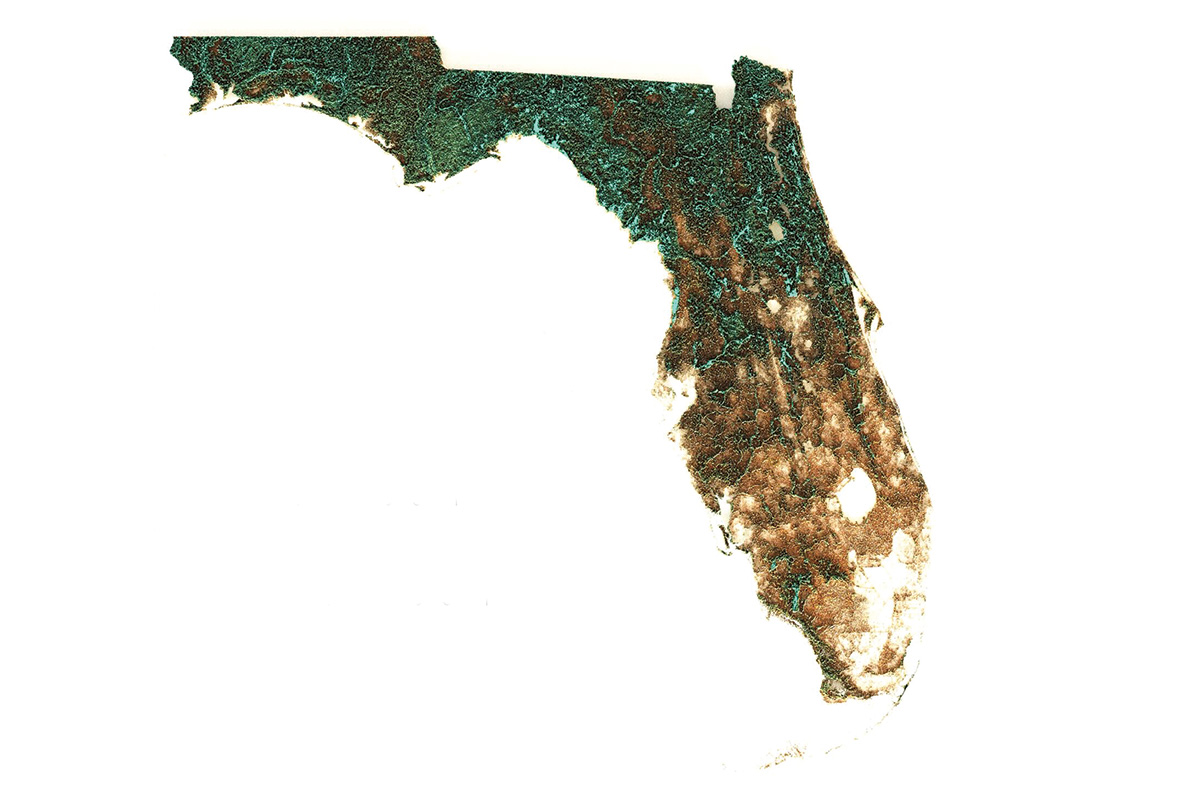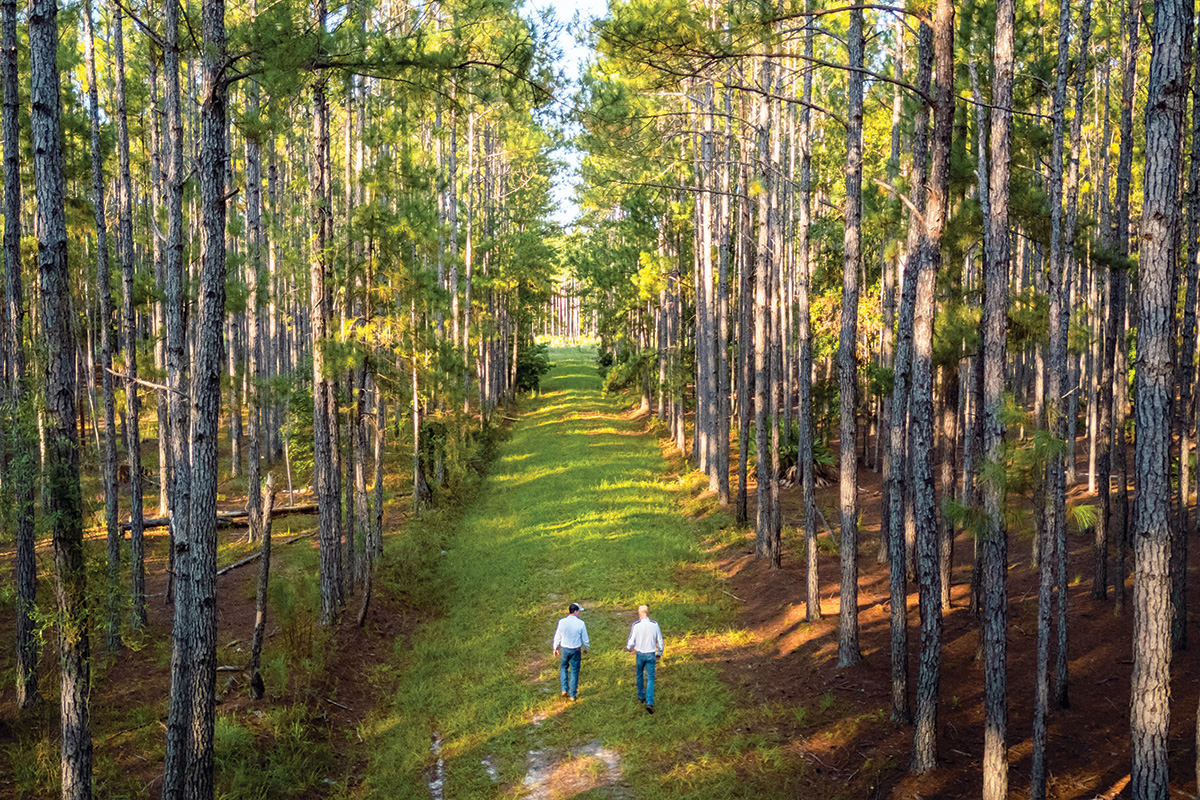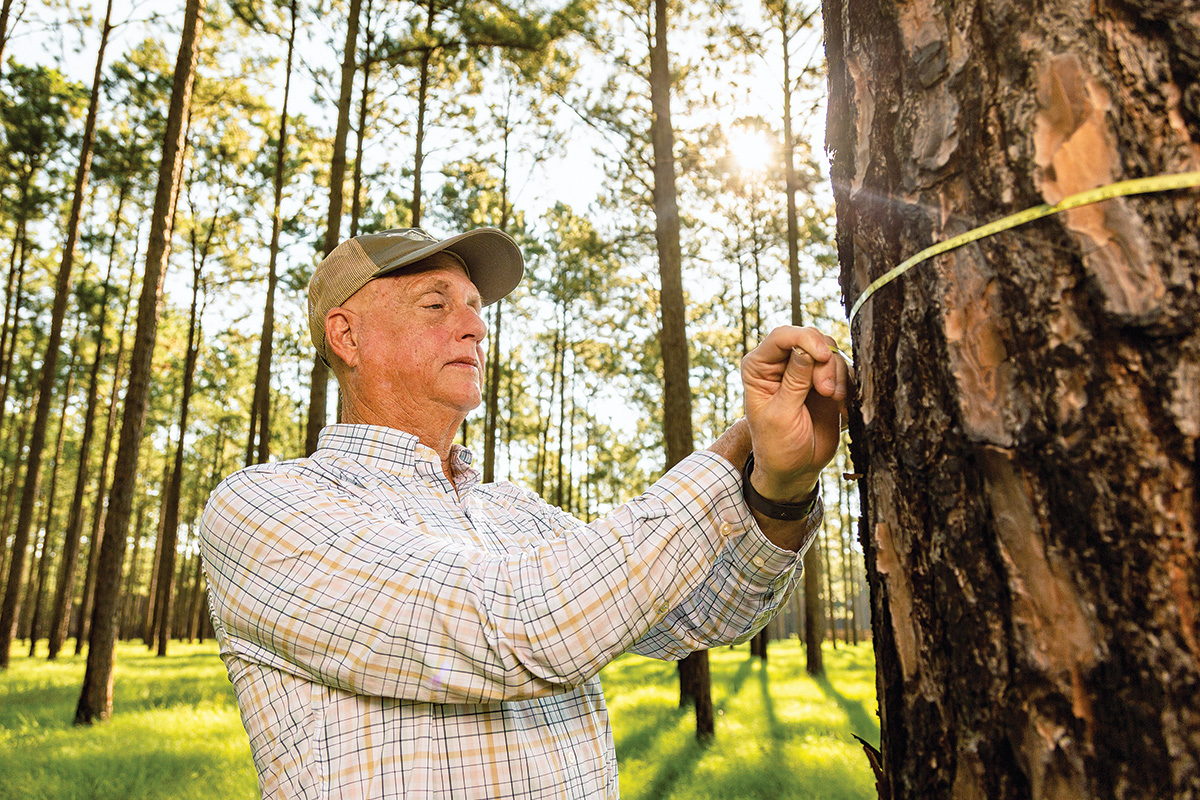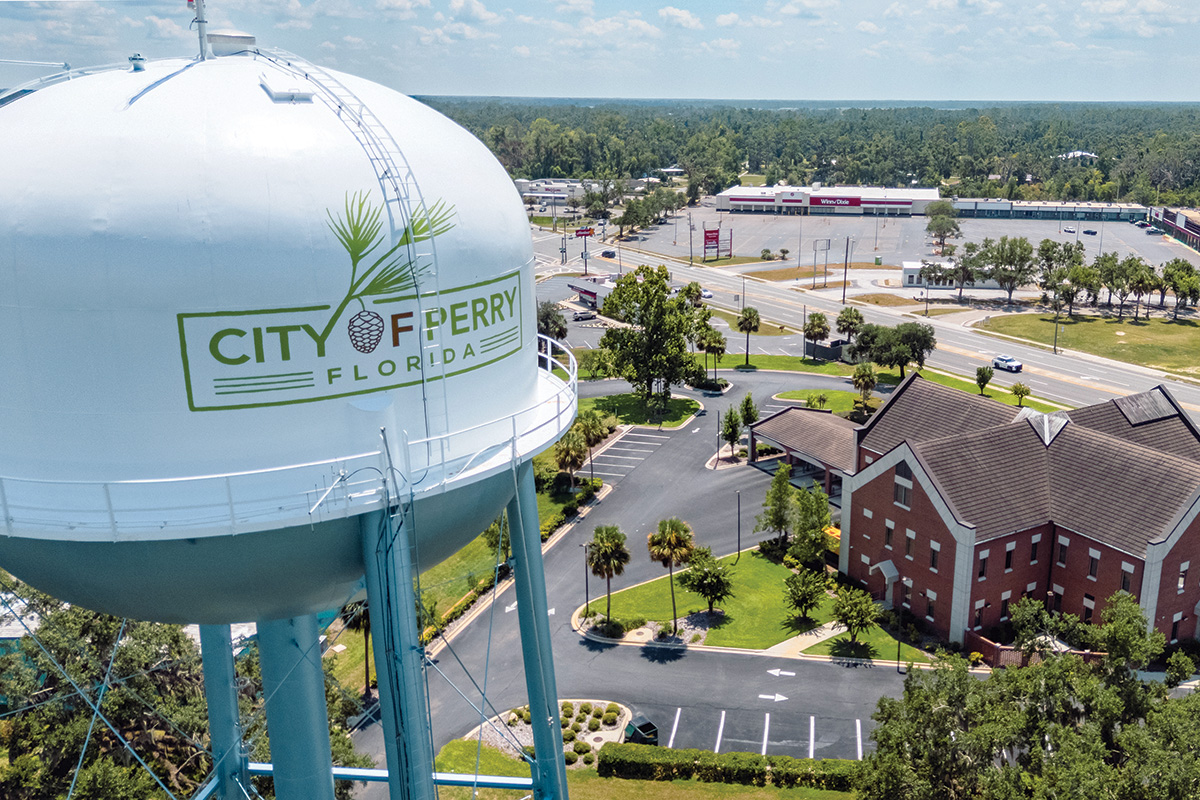THE YEAR IS 1961. John Alter, a red-blooded aviator-to-be at Naval Air Station Whiting Field near Pensacola, is whipping his British sports car down U.S. Route 90 when he passes a parked vehicle. One of its two young female passengers waves to him.
That’s how Alter met his future wife of 63 years, their stories permanently intertwined when he looped his car around to help. Elizabeth, a recent Florida State University graduate in music education, offered to cook him dinner in repayment. The rest was history.
At the time, Elizabeth’s father owned 2,000 acres of ag land in a small Panhandle town called Bascom, its 90-some residents tucked close to the Florida-Georgia border in Jackson County. Eventually, Elizabeth and John inherited half of the property, most of their share covered in timber.
Timber has long reigned as one of Florida’s top agricultural commodities. Nearly half of the state is coated in forestland, and about two-thirds of that is privately owned and managed. It spits out timber that’s used in more than 5,000 products, from cardboard to toilet paper to pharmaceuticals to cosmetics. In 2022, Florida’s forestry and logging operations supported $1.23 billion in sales revenue and more than 9,500 jobs across the state, according to a University of Florida economic impact analysis.
Over his years as timberland owner, John Alter — a self-described “Yankee” originally from the Midwest — learned how to manage 600 acres of trees, facilitate their harvest and replanting, and appreciate them at every stage. He mastered the art of growing his stands, or contiguous units of managed timber, in neat straight lines, a sense of order he supposes was reinforced in the military, even assigning his plots with house numbers and street names like Neighborly Way and Cemetery Circle. By the time the Alters were dubbed Florida’s Outstanding Tree Farmers of the Year in 2015, their property had been perfected.
Hurricanes, mill closures and the creeping pressure of development have all taken a toll on Florida’s timber industry.
That lasted until Category 5 Hurricane Michael hit the Panhandle in 2018, plowing through 2.8 million acres of forests in Florida. It damaged 72 million tons of standing timber — an estimated $1.3-billion loss — across 11 counties.
The Alters were not spared. Their damaged timber sold at a fraction of typical rates, the region’s prices hampered by saturated markets post-hurricane. Altogether, the pair estimates they lost hundreds of thousands of dollars in the storm.
“My family has been here since 1855, and nowhere in history has there ever been a hurricane like Hurricane Michael,” says Elizabeth, now 85. “We always thought we were safe. But we found out otherwise.”
Since Hurricane Michael, several surly storms have battered Florida’s timber belt. They’re not the only threats impacting business. Mill closures have blown holes in wood baskets — the geographic pockets of regional timber resources and industries — and rural communities across the state. The marketplace is dipping. And all the while, the creeping pressure of development looms over Florida’s remaining green spaces.
Florida’s timber industry — which, altogether, contributes an estimated $25 billion to the state economy — is in desperate need of a renaissance.
“This is the wood basket of the world,” says Frank “Bump” Faircloth, former CEO of Suwannee Lumber Co. in Cross City. He sold the sawmill to a New York-based private equity firm in 2013 for $48 million. North Florida is “built for wood production and wood manufacturing. We need someone to recapture that, come here and continue this legacy. ... This way of life is going to evaporate unless we get something in here.”
MOTHER NATURE’S WRATH
Of Florida’s nearly 17 million acres of forestland, about a fourth is in pine plantations, or commercial tree farms designed for timber production. Slash pine, longleaf pine and loblolly pine are among the more common species grown in the state.
Depending on the species, it can take pine trees decades to reach maturity in the U.S., growing taller than 75 feet if allowed. In Florida, timber is typically harvested after 20 to 30 years of growth. Then it’s time to start the cycle again. Newly planted tree stands soon turn the clear-cut moonscape back into a healthy forest.
The renewable resource isn’t as vulnerable to market volatility as other agricultural commodities. There’s less spoilage risk for the slow-growing crop, so producers can wait for the opportune time to harvest.
That generally makes timber a lower-risk investment — unless, say, a hurricane takes out thousands of acres of trees in one fell swoop. It’s a nightmare that has played out repeatedly for Florida growers.
When Hurricane Idalia hit the Big Bend as a Category 3 storm in 2023, it caused $65 million in damage to 3.1 million tons of timber. Last year’s Hurricane Helene — the third hurricane to impact the Big Bend region in 13 months — brought $114 million in damage to 8.9 million tons of timber. Just two weeks later, Hurricane Milton gave a $25-million jab to the industry as it swept east across the Florida peninsula. Even Hurricane Ian’s 2022 punch to Southwest Florida, far removed from the state’s timber belt, still caused nearly $33 million in timber damage.
Timber requires an investment on the front end — anywhere from $300 to $500-plus per planted acre — and a good bit of faith along the way. Owners can churn some profits over time by thinning tree stands or selling byproducts like pine straw or bark. But in general, their big paycheck doesn’t come until decades later at harvest. No harvest, no recouping money for taxes and management costs, let alone making a profit.
To make it worse, very little timber is insured. That means a timberland owner with millions of dollars in standing trees could go broke overnight during a hurricane, their lifesavings snapped like toothpicks. That devastation — even after salvaging as much damaged wood as possible — can linger on properties for years.
“Mother Nature is the risk for a grower, and they know that,” says Tamara Cushing, a UF extension assistant professor in forest economics. “They can’t pick (timber) up and move it because a hurricane is coming. So, there are people trying to decide if they’re going to continue to face those risks over time.”
Chris Demers runs the Florida Land Steward Extension Program from the UF/IFAS School of Forest, Fisheries and Geomatics Sciences. Most of the 6,000 program participants are involved in timber management on their properties, Demers estimates.
He notes widespread concern about hurricane impacts. At a recovery workshop in Madison County after Hurricane Idalia, some attendees said they’d “never plant another tree again,” he recalls. “We have landowners that, if they have damage from a hurricane or a (wildfire) or something, they’re definitely asking that question, ‘Should I really plant these back?’”
It cost Robert Lynn, a Taylor County resident who has grown slash pine for 50 years, $50,000 just to clean up his 500-plus-acre property after Hurricane Idalia. The storm destroyed around a fifth of his trees, costing him hundreds of thousands of dollars. Hurricane Helene added another $50,000 in clean-up costs.
“That’s a 20-year investment. That’s almost a lifetime for a lot of people,” he says. “But I bit the bullet in continuing. That’s what a farmer does. Get slapped down, then you get back up.”
There’s interest in creating better support systems for tree farmers. After Hurricane Michael, Florida introduced its first-ever grant program for helping timberland owners recoup their hurricane losses and replant stands. It was funded by $380 million in federal grants announced in November 2019.
More recently, the state also received $675.9 million in federal funding this July to cover infrastructure, citrus and timber losses for producers rattled by Hurricanes Idalia, Debby, Helene and Milton. Lynn recouped 100% of his losses through this funding, saying, “I’m one thankful farmer.”
MILL MISERY
Growing up in Taylor County, a rural and coastal jurisdiction in Big Bend with less than 22,000 residents, Lee Coulliette saw timber as the lifeblood of his community. He had witnessed the wood basket produce more than 3 million tons of timber a year, giving way to high-paying jobs that supported his family and friends.
Coulliette dreamed of working in the industry himself. And in January 2017, that dream came true: He was hired to work in operations at a specialty pulp mill in Perry, the county seat. The facility produced specialty fibers used in products like textiles and diapers.
He had graduated to mill mechanic by the time Hurricane Idalia swept through in late August 2023. The mill owner — Atlanta-based manufacturer Georgia-Pacific — had paused its incoming wood stream ahead of the storm. That pause became permanent on Sept. 18, when Georgia-Pacific told its staff the mill was shutting down.
The closure sent an estimated $571 million in economic losses rippling across Taylor County, according to a 2023 UF/IFAS report. More than 1,000 positions, or 12% of all jobs in the county, were eliminated. Of those, 525 worked at the mill.
Publicly, Georgia-Pacific called the decision “strategic,” one made prior to the hurricane and influenced by various factors. “Ultimately, GP does not believe that the mill can competitively serve its customers in the long term despite the significant investments and commitment,” it wrote in a press release. Many locals speculate the move was meant to take supply off the market, raising the price of remaining wood products and driving more demand to other mills. Georgia-Pacific did not respond to Florida Trend interview requests for this report.
“They just said they’re walking away from it. It hurt,” says Coulliette, who turns 41 this month. “I felt like I had lost a dream that I’d chased. My No. 1 thought was my wife and my son. What am I going to do to provide for them?”
Mills are crucial to the timber industry and to rural economies. They turn harvested trees into items you see at the store and are specialized to certain wood products. Most importantly, they rely on each other to stay profitable. For example, byproducts from sawmills, such as the wood chippings leftover from shaping two-by-four lumber, are sold to pulp mills to be transformed into another revenue stream. Every part of the tree becomes a commodity, down to the bark — sold as mulch — and the wood shavings — sold as animal bedding.
If one piece of the puzzle falls away, the system can crumble.
Soon after Georgia-Pacific shuttered its Perry plant, the town’s sawmill — owned by Canadian wood manufacturer West Fraser — announced its permanent closure in March 2024. It had been on an indefinite pause since that January. The company blamed high fiber costs and softening markets for the decision, affecting 126 employees. Generally, selling byproducts to pulp mills comprise 8% to 10% of a sawmill’s income.
For the first time in a century, there was no operating wood manufacturing mill in Perry, the town that’s long called itself the “Forest Capital of the South.” And there hasn’t been one since.
“That was about 3.75 (million) to 4 million tons of pine a year, that two years ago had a home: those mills,” says Don Curtis, owner of The Forestry Co., which offers timberland management services around Perry. “Now it doesn’t have a home.”
Additional mill closures have further rocked Florida’s wood baskets.
In 2022, Atlanta-based packing company WestRock permanently shuttered its paper mill in Panama City that employed 450 people. West Fraser closed its sawmill near Jacksonville last January, eliminating 79 jobs, and then indefinitely paused operations at its sawmill in Lake Butler last September, affecting 130 employees. In southern Georgia, still intertwined with Florida wood baskets, Georgia-Pacific closed a containerboard mill this August.
Impacts from each mill closure ripple across Florida’s timber belt. The closure of Perry’s Georgia-Pacific pulp mill alone lost the state $140.6 million in labor income, $8.2 million in taxes and $571.8 million in industry output, estimated the 2023 UF/IFAS report.
“It has just about crushed the industry,” says Michele Curtis, Don’s wife. She had worked as supply manager of the Perry pulp mill for 35 years until Georgia-Pacific acquired it in 2013. She then watched its demise as a consultant for The Forestry Co. “We have very little left in the way of sawmills. And the other pulp mills, we hear rumors sometimes that they’re at risk of being shut down. If those things shut down, the forest industry’s over.”
The closure of Perry’s Georgia-Pacific pulp mill cost the state $140.6 million in labor income, $8.2 million in taxes and $571.8 million in industry output, a report shows.
Loggers, the middlemen that cut and haul timber between landowners and manufacturing mills, face longer drives due to closures. That cuts into their bottom lines.
After the Georgia-Pacific mill closed in Perry, the local Boland Timber Co. lost 60% of its logging business. Its next-closest pulp mill is now in Georgia, an extra 45 miles. Jamie Boland, the company’s master logger, says he went from running four logging crews to running two. By increasing their weekly capacity from 60 to 80 loads, “I’m back up to probably three-quarters of what I was doing” before the closure.
He notes a litany of other expenses cutting into his pocketbook. His insurance premiums increase by 20% to 30% every year. Costs of logging equipment have doubled. He estimates his profits have dropped by half since 2023.
“I’ve never seen it go this way — as long as I or my granddad or my dad” have been in business, Boland says. “There’s always been mills — always. ... It’s a little scary. It’s the worst I’ve ever seen. But I’m hoping we’re on the comeup from the bottom.”
RALLYING OPTIMISM
Avery Roberts knows all too well that wood products can come and go.
He bought his first piece of land at age 18 and planted a stand of timber. Following in his late father’s footsteps, he joined the turpentine industry to harvest pine tree resin. As labor costs mounted and synthetic substitutes grew more popular, he became one of the last two Florida farmers to harvest the product.
Roberts abandoned turpentine altogether in the early 1990s. He has since built up The Roberts Cos., a portfolio of businesses specializing in farmland- and timberland-related developments, investments and site work. He also owns 30,000 acres of pasture and timberland in the state.
As president of the Florida Forestry Association, he’s not giving up hope.
“We’re in a difficult time in our industry right now. It’s a critical time. But a lot of good things can come out of tough times,” he says. “When there’s tough times in a family, it unifies the family. That’s where we need to be in the forest industry. Our family needs to be unified. And we’re getting there.”
The industry is rallying optimism behind emerging wood markets that could boost demand for Florida timber.
Mass timber, for example, has captured the attention of many. It’s a class of prefabricated, multilayered wood products used as structural building components like columns, beams and panels. The style will soon be on display in the future Integrated Natural Resources Building at the University of Florida, a planned showcase of southern yellow pine to “promote sustainable construction using locally sourced timber,” the project website says.
The Florida Building Code does not currently list mass timber as a building product. Instead, it’s identified as an alternative building material. The Florida Forestry Association is pushing for its reclassification to boost awareness, credibility and use of the material.
“We could very easily see a mass timber facility being located in our region,” Roberts says. He points to Montana-based SmartLam, which began producing mass timber in 2019 at a Dothan, Ala., plant just across the Florida border. This year, it invested $60 million into expanding those operations with a new facility.
One new industry is already slated for the region: In August, biochar supplier Circularity2 announced plans to construct its flagship facility at the Cross City Industrial Park in Dixie County. There, it wants to turn hundreds of thousands of tons of forestry byproducts into biochar — a charcoal-like substance made from burning organic material, which can be used as a soil additive, water purifier or carbon-neutral ingredient for industrial products. The new plant will create up to 35 jobs.
Biomass energy, where organic material is burned to generate heat, is another market where wood products can pick up steam.
Maryland-based renewable energy company Enviva acquired a production plant in Jackson County’s Cottondale in 2015. There, it converts lesser-grade wood materials into pellets used as fuel at power plants. “We think the pellet for energy is a huge future use of our products,” Roberts says. (Europe is today’s largest consumer of wood pellets. Biomass energy comprises just 1% of Florida’s energy generation, much of it occurring onsite at wood mills.)
Some timberland owners are calling for compensation for the natural benefits from their lands.
A 2012 UF study estimated it would take $5,000 to replicate the ecosystem services an acre of forest land provides, like animal habitat and carbon sequestration. Through photosynthesis, trees produce oxygen and absorb carbon dioxide, a greenhouse gas that contributes to climate change. Forests also absorb rainfall, prevent flooding and filter groundwater. Incentivizing those services could keep them from going away, some tree owners contend.
Demers of UF points to the Florida Fish and Wildlife Conservation Commission’s pilot project that rewards private landowners for maintaining and improving Florida panther habitat on their properties in South Florida. Payment rates range from $7 to $17 per enrolled acre.
“In this business, we try to maintain optimism about the markets. There’s always going to be a slump,” he says. “Right now, we’re in a trough with a lot of the timber products that we’ve been working with over the years. There’s going to be innovation. Something’s going to fill in the gap eventually.”
A WAITING GAME
Back up in Bascom, on a sunny spring day, John Alter steps out of his truck onto a 12- acre plot of slash pines, with pine needles and bark crunching under his feet. The trees encircling him, planted in 1994, are due to be harvested soon.
At 88 years old, Alter already has his funeral planned. He knows what casket he’ll be laid to rest in. He knows what preachers he’d choose to officiate. And he knows the stand of trees around him will be his last harvest. “Trees outlast humans,” he says matter-of-factly.
Since the Alters’ first harvest in the late 1990s, they’ve stewarded their land the best they can. After Hurricane Michael, the pair reinvested their disaster relief funds into replanting trees — knowing their new stands would outlive them and be passed along to their sons.
John says the choice was driven by tradition and, above all, a deep-seated love of trees. “Every time you take a deep breath, you need to thank a tree.”
Over the years, wood prices have edged up with demand — as they did during COVID-19, when home renovation projects abounded — and have slumped. Florida’s timberland acreage has ebbed and flowed in accordance.
Some parcels get conservation easements, destined to stay forested in perpetuity. Sometimes, timber is converted to cattle pastures or row crops and then back to timber again. Residential and industrial developments are on the table as well, looking more attractive than ever given Florida’s booming population and economy.
But once you plant houses, you can’t go back.
For Carlton Jones, the 2020-21 president of the Florida Forestry Association, the evidence is in Central Florida. He works for Tampa-based Robbins Manufacturing Co., which produces fence posts, marine pilings and utility poles at two mills in Lake City and Tarrytown. He says nearby development is putting pressure on the local wood baskets.
“They’re just eating up the land,” Jones says. “That’s our biggest challenge company-wide right now.”
In 2024, 76,000 acres of timberland sold between 278 transactions across Florida, according to a market report from Lakeland-based Saunders Real Estate. Their average price was around $2,600 per acre — a 7.6% decrease compared to 2023 but still a jump from pre-COVID prices that hovered around $1,500 per acre. It’s unclear how many of those sold acres stayed in timber.
As of now, it’s a waiting game to see if sprawl will swallow the stillrural swaths of the Panhandle and the Big Bend.
“I’m optimistic. In the next, I’ll say 20 years, we’re not going to develop the state out,” says Jim Karels, former director and state forester of the Florida Forest Service who now chairs the Florida Forest Association’s Governmental Relations Committee. “Florida will struggle if it’s all houses and pavement. It will really struggle. Keeping this industry where the landowners can keep it in forestry is good for all of us.”



